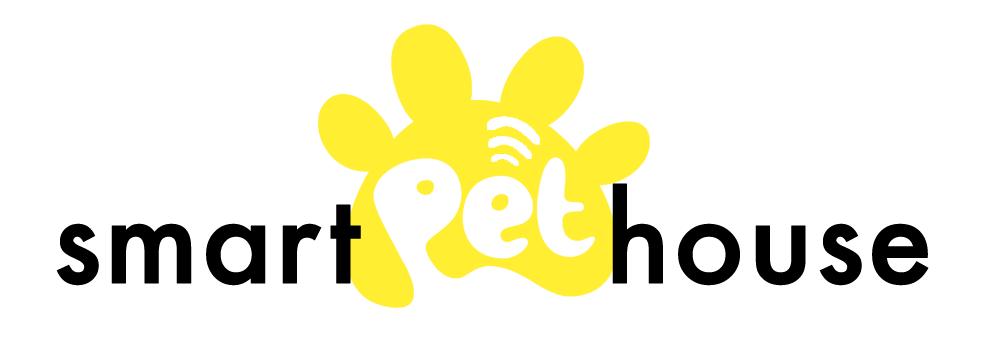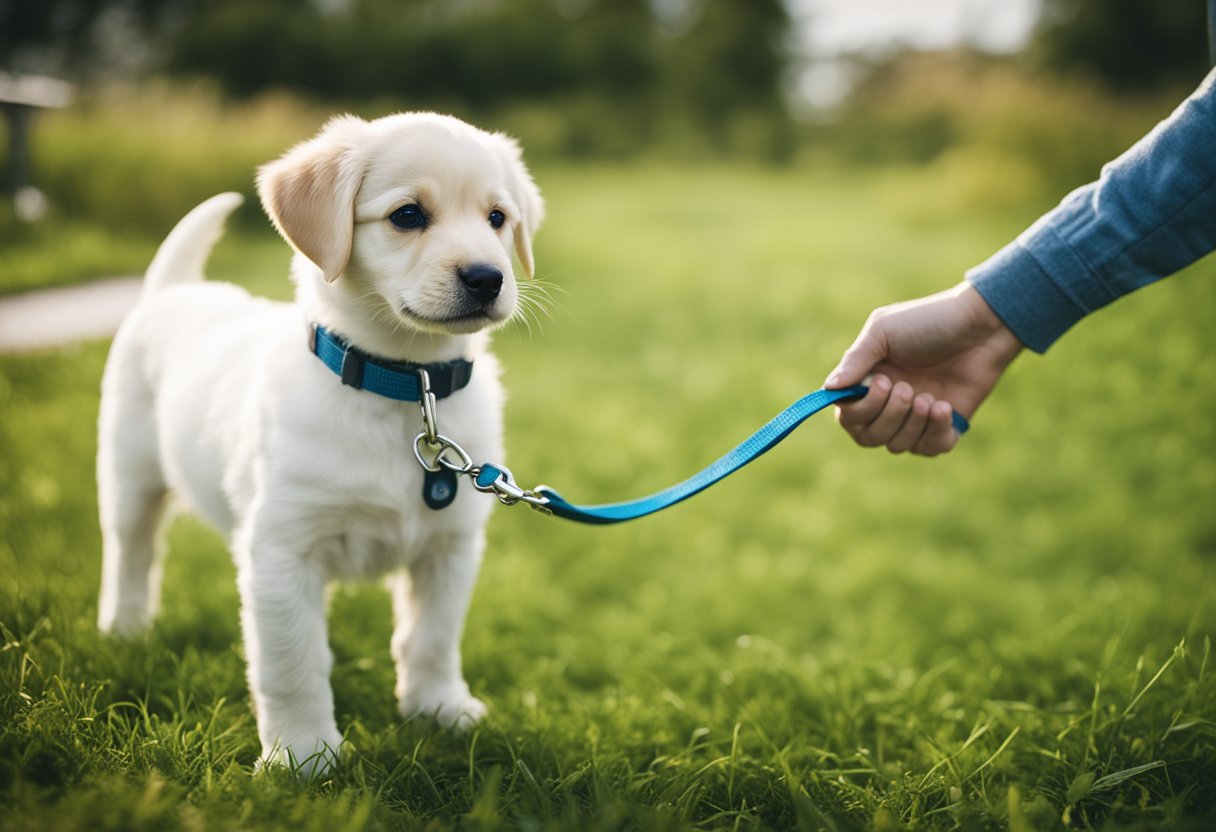When we bring a new pet into our home, one of the first and most crucial tasks ahead of us is potty training. Successfully housebreaking a pet sets the foundation for a happy, healthy relationship between us and our new furry friend. It can be a challenging process, but with the right tools and smart devices designed specifically for pet training, we can make this journey smoother for both our pets and ourselves.

With the advent of innovative technology, training our pets has become more efficient. Smart devices, such as automatic treat dispensers, can reinforce good behavior instantly and consistently, making it easier for our pets to understand and follow potty training routines. Utilizing technology not only helps us keep track of our pet’s progress but also gives us the convenience of maintaining a consistent training schedule, even when we’re not at home.
Key Takeaways
- Establishing a potty training routine is essential for a harmonious pet-owner relationship.
- Smart devices can significantly enhance the effectiveness of pet potty training.
- Consistency and patience are key to successfully potty training your pet.
Understanding Your Pet
We all want to ensure our pets are healthy, happy, and well-trained. When it comes to potty training, understanding your pet’s behavior is key to success. It’s important to recognize when your furry friend is ready to begin training and to adjust our methods based on their age. With smart devices designed to aid pet training, we can make the process more efficient and tailored to our pet’s needs.
Signs of Readiness
Your pet will show certain behaviors indicating they’re ready to start potty training. Here’s what to keep an eye out for:
- Sniffing or circling: A common sign they need to go.
- Restlessness: When they can’t seem to settle, it might be time.
Some smart devices alert us when they detect such behaviors, helping to catch that crucial moment right before we need to take action.
Age Considerations
- Puppies: Typically start training between 12-16 weeks old. Younger puppies lack control of their bladder muscles, so patience is key.
- Adult Dogs: If you’re training an older dog, they might catch on more quickly, but it’s crucial to stay consistent with them.
Smart pet devices can help keep track of a potty schedule based on your pet’s age, ensuring we’re assisting them in the best way possible.
Creating a Routine

Establishing a consistent routine is the cornerstone of successful potty training for your pet. We know how challenging it can be, but with smart devices like automatic feeders and pet monitors, we can create a foolproof schedule that works every time.
Feeding Schedules
Feeding your pet at the same time each day is a key step in a successful potty training routine. By using an automatic pet feeder, we ensure meals are dispensed at precise times, which helps regulate our pet’s digestive system. Here’s how we do it:
- Morning Meal: Set the feeder for early in the morning, but not the very first thing your pet does.
- Evening Meal: Schedule the last meal at least a few hours before bedtime to prevent late-night potty needs.
With the consistency of an automatic feeder, we take the guesswork out of meal times, making potty training run smoother.
Potty Breaks
Scheduling potty breaks is just as crucial as meal times. Smart pet doors and monitors can alert us when it’s time for a bathroom break and even track our pet’s usual potty times. For younger puppies, it’s important to have more frequent outings. Here’s a simple timeline:
- After Meals: About 5 to 30 minutes post mealtime.
- Naptime: Immediately after waking up from naps.
- Playtime: After intense play sessions.
By sticking to these times and utilizing smart pet technology, we help our pets learn faster and with more ease.
Choosing the Right Equipment

Have you ever considered turning your pet’s potty training into a seamless, high-tech experience? We’re here to guide you through picking top-notch equipment that integrates the latest smart technology. In doing so, we’ll focus on helping you select the ideal potty area and the necessary cleaning supplies to ensure a clean and stress-free environment.
Types of Potty Areas
When selecting a potty area for your pet, it’s smart to consider modern solutions like electronic potty training systems. These smart devices can range from sophisticated self-cleaning pads like the BrilliantPad, to high-tech options that send alerts to your phone when your pet needs to go. To make the training process comfortable for your dog, you might also want to explore the Mighty Paw Smart Bell 2.0. This doorbell is designed specifically for dogs to notify you when it’s time for a bathroom break.
- Self-cleaning Potty Systems
- Smart Bells and Alerts
- Indoor/Outdoor Adaptability
Cleaning Supplies
In coordinating with our smart potty areas, we shouldn’t overlook cleaning supplies. It’s essential to have an effective and easy-to-use system to maintain hygiene. Products like eco-friendly enzyme cleaners that break down odors and stains are invaluable. For efficient cleanup, consider high-tech options like UV sanitizers and handheld vacuums designed for pet owners, which make the process quick and hassle-free.
- Eco-friendly Enzyme Cleaners
- UV Sanitizers for Hygience
- Handheld Vacuums for Pet Hair and Accidents
By equipping ourselves with smart potty areas and reliable cleaning supplies, we pave the way for a positive potty training experience. Let’s embrace these innovative tools to make life simpler for both us and our furry friends.
Training Techniques

In the world of smart pet devices, we’re always looking for ways to make training our furry friends more efficient and enjoyable. Training techniques have evolved, and by leveraging these smart methods along with tech tools, we make the training process a delight for both us and our pets. Now, let’s explore some specific techniques that blend beautifully with our smart device-enhanced lives.
Positive Reinforcement
Positive reinforcement is at the heart of modern pet training, where we reward good behavior with treats, praise, or playtime. By incorporating smart devices, we can provide instant rewards remotely. Automated treat dispensers can immediately offer a nibble when your pet succeeds, reinforcing the behavior even when you’re not in the room.
Crate Training
Crate training is effective for establishing a routine and can be especially helpful for managing potty training. By using a smart crate equipped with sensors, we can monitor our pet’s movements and crate time. This helps us understand their potty patterns, making it easier to guide them towards success with timely breaks.
Interrupting Accidents
When it comes to interrupting accidents, the key is being observant and acting quickly. Smart pet monitors can alert us the moment our pet seems ready to go. We can then interrupt and redirect them to the appropriate potty spot. This immediate feedback helps our pets learn faster where it’s okay to relieve themselves.
Troubleshooting Common Issues

When we tackle the journey of potty training our pets, it’s akin to using a new smart device—sometimes, it doesn’t work as smoothly as we expect. But just as we would explore troubleshooting options for our tech, we can apply similar strategies to overcome challenges in pet potty training. Let’s focus on specific solutions for substrate preferences and handling the inevitable setbacks.
Substrate Preferences
Our pets can be discerning about where they do their business, similar to how we have preferences for our smart device interfaces. Substrate refers to the material they choose to eliminate on. Here’s how to address this:
- Identify Preference: Pay close attention to your pet’s behavior to discern their preferred substrate, whether it’s grass, gravel, or something else.
- Incorporate Preferences: Once identified, use this knowledge to adjust their potty area accordingly, encouraging use of their favored substrate.
Remember, consistency is key, just as with the settings on our favorite smart devices.
Dealing with Setbacks
Setbacks can be disheartening, but they’re a part of learning—whether with a new app or potty training.
- Stay Positive: Always respond with encouragement, not punishment. Our reactions can reinforce or hinder progress.
- Reassess and Adjust: If accidents occur, reevaluate your approach. Are there cues from our pets we’re missing, or do we need to set more frequent potty breaks?
Approaching these issues with a tech-savvy mindset helps us find creative and logical solutions, strengthening the bond with our pets and leading to successful potty training.
Frequently Asked Questions
Navigating the world of potty training can be a bit overwhelming, but we’re here to help you through it. We understand the challenges and, armed with the right know-how and gadgets, we believe you can create a smooth potty training schedule for your furry friend.
How can I establish a potty training schedule for my puppy?
To set up a potty training schedule for your puppy, it’s essential to be consistent with meal times and potty breaks. We recommend using smart pet feeders to manage feeding schedules and synchronize them with potty times for efficiency.
What are the steps to toilet train a puppy within a week?
Toilet training in such a short time demands patience and diligence. Start by taking your puppy to the same spot frequently and praise them immediately after they’ve done their business. Employing training pads and a consistent routine is key for quick learning.
Can you provide guidelines for a potty training schedule based on a puppy’s age?
Yes, we can tailor a potty training schedule to your puppy’s age. Younger puppies typically need to go out every 1-2 hours, while older puppies can gradually hold it longer. Integrating smart doggy doorbells enables them to indicate when they need a potty break.
What techniques work best for house training an adult dog?
For adult dogs, implement a regular routine and use positive reinforcement. Devices like indoor surveillance cameras can help you monitor their indoor behavior and signs they need to go out for timely action.
Is it possible to potty train a puppy that is only 8 weeks old?
Absolutely, at 8 weeks old, a puppy can begin potty training. Keep in mind they will need frequent breaks due to their small bladder. Tools such as puppy potty alarm sensors that alert you when your pup is active can be extremely helpful.
What are some effective strategies for potty training a dog quickly, within a few days?
Potty training quickly involves a strict schedule, lots of supervision, and reward-based incentives. Utilizing smart potty notification systems can streamline the process and provide timely reminders for bathroom breaks.

